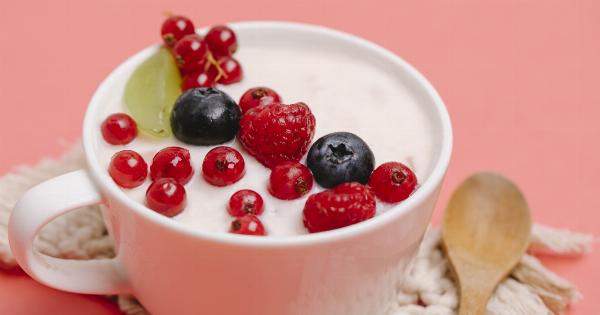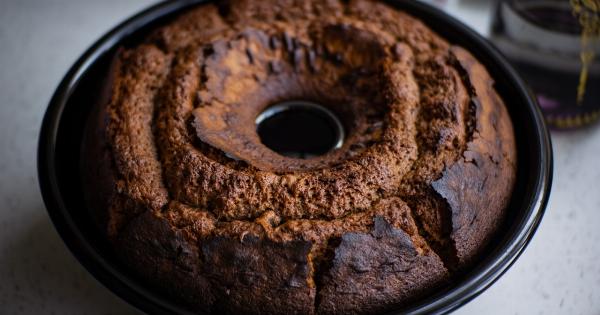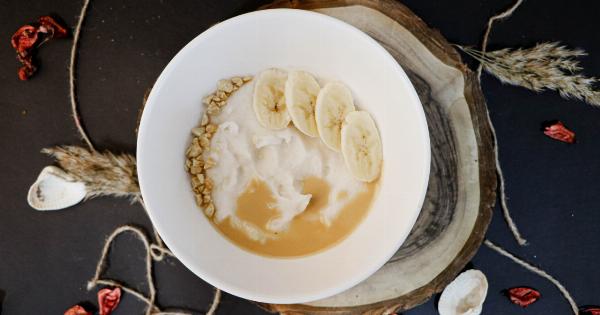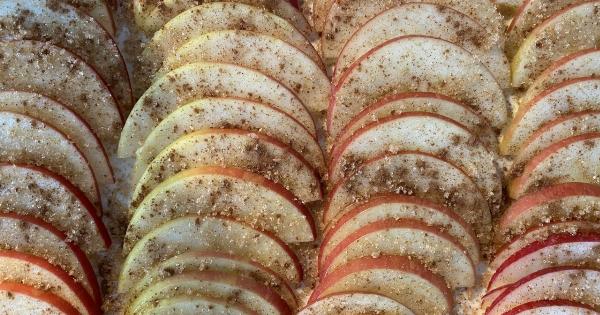Apple pie is a classic American dessert enjoyed by many, especially during the fall season. Its flaky crust, sweet apple filling, and warm spices make it a comforting treat.
However, if you are watching your calorie intake or following a strict diet, you may wonder how many calories are in a slice of apple pie. In this article, we will explore the calorie content of apple pie and provide you with some useful information.
The Calorie Content of Apple Pie
The number of calories in a slice of apple pie can vary depending on several factors, including the size of the slice, the ingredients used, and the type of crust. On average, a slice of apple pie contains around 300-400 calories.
However, it is essential to note that these figures are estimates, and the actual calorie content may vary.
Factors Affecting the Calorie Content
The following factors can influence the calorie content of a slice of apple pie:.
1. Slice Size
The size of the slice plays a significant role in determining its calorie count. A smaller slice will naturally have fewer calories compared to a larger one.
It’s important to keep this in mind while serving or consuming apple pie to avoid unnecessary calorie intake.
2. Crust Type
The type of crust used in the apple pie can also impact its calorie content. Traditional pie crusts made with butter or shortening tend to be higher in calories compared to crusts made with alternative ingredients like almond flour or oatmeal.
Opting for a healthier crust option can help reduce calorie intake without compromising on taste.
3. Filling Ingredients
The ingredients used in the filling can affect the calorie content of the apple pie. Sugar, butter, and other sweeteners may contribute to increased calorie levels.
However, you can experiment with healthier substitutions like using less sugar, natural sweeteners, or even sugar-free alternatives to reduce the calorie count.
4. Toppings and Add-ons
Common accompaniments to apple pie, such as whipped cream or a scoop of ice cream, can significantly increase the calorie content.
While these add-ons enhance the flavor, it’s essential to be mindful of portion sizes or consider healthier alternatives like Greek yogurt or low-calorie toppings.
Managing Calorie Intake
If you are concerned about the calorie content of apple pie but still want to enjoy this delicious dessert, here are a few suggestions:.
1. Control Portion Sizes
Instead of indulging in a large slice, opt for a smaller portion to manage your calorie intake. Pair it with a side of fresh fruit or a light salad to keep you satisfied without overloading on calories.
2. Choose Healthier Crusts
Consider making or purchasing apple pie with alternative crust options such as whole wheat, graham cracker, or gluten-free crusts. These choices can provide a lighter and healthier alternative to traditional crusts.
3. Modify the Filling
Experiment with the filling ingredients to reduce the calorie content. Use natural sweeteners like honey or maple syrup and incorporate spices like cinnamon or nutmeg to enhance the flavor without adding extra calories.
4. Lighter Toppings
If you can’t resist adding a dollop of whipped cream or a scoop of ice cream, choose low-fat or sugar-free versions.
Alternatively, try garnishing your apple pie with a sprinkle of cinnamon or a drizzle of caramel sauce for added flavor without excessive calories.
Enjoy Apple Pie in Moderation
As with any indulgent dessert, moderation is key. While apple pie can be enjoyed as part of a balanced diet, it’s important not to make it a regular occurrence if you are watching your calorie intake.
Remember to listen to your body’s signals of hunger and fullness and savor each bite when you do indulge.































